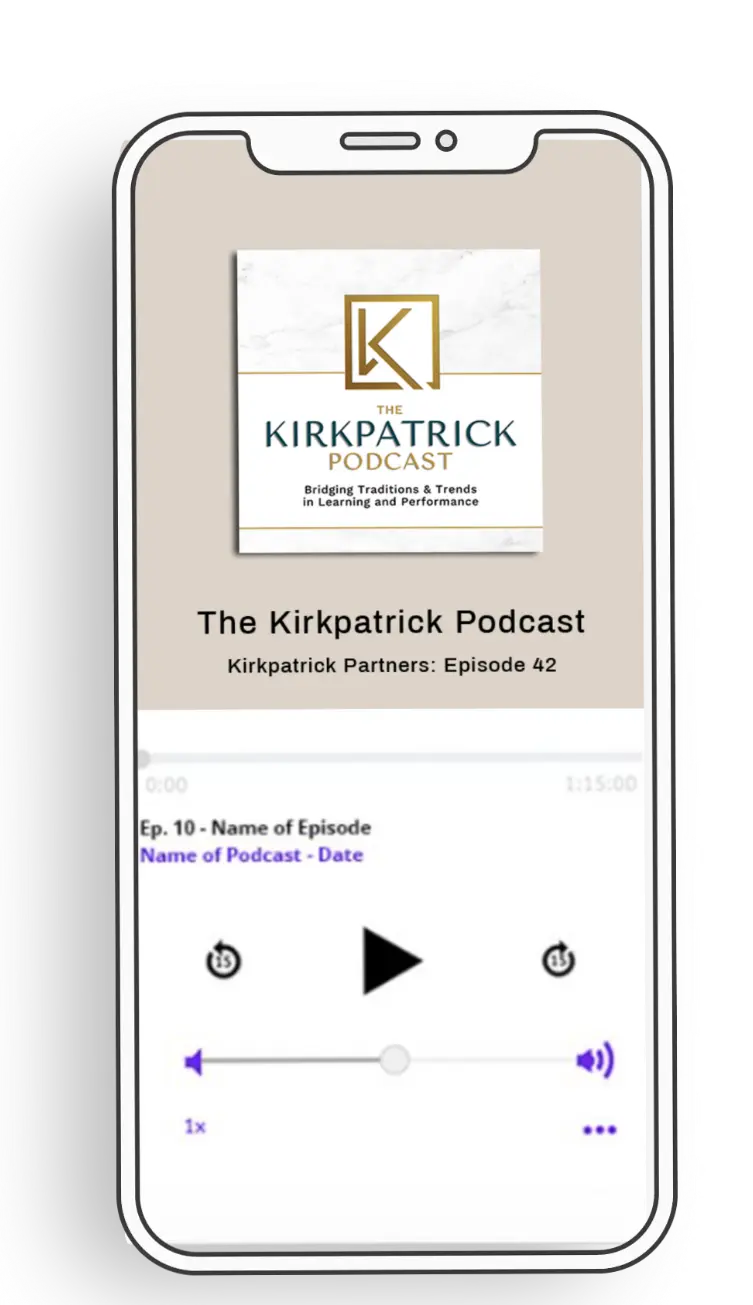4 Small Training Changes That Yield Big Outcomes

By Jim Kirkpatrick
Are you struggling to get the input you need from others to build your training programs? Is feedback hard to come by?
There is no natural bridge between training and the business, but there are simple steps you can take to build a path for yourself. Here’s a story to provide some background.
I am an avid fisherman. I once had the good fortune to trout fish in a beautiful mountain stream near Franklin, North Carolina, in early winter with a good friend. One of the keys to enjoyable trout fishing is staying warm and dry. It was cold enough that ice had formed on the parking lot that day, but we had dressed in warm layers and we both had chest waders, so we were covered.
On that particular day, I thought how thankful I am that my waders do not leak so I can easily walk across a stream in comfort and safety. It reminded me of the chasm that seems to exist between the world of training and the world of work. The necessity for safe passage has taken on increased importance, and it has the possibility to yield increased rewards.
We no longer have the luxury of spending the majority of our time and “training” budget for traditional instructional design, development and delivery of formal programs. Our training industry survival depends on us finding ways to align our work with improving workplace performance. We must provide value that compels line supervisors and managers to say, “Thanks for helping my people do their jobs better.”
There is no natural bridge for you to cross from training to the business any more than there was a bridge across the mountain stream where I was fishing with my friend. In both cases, waders are required.
Here are four ways to put on your virtual waders and connect with the business you serve:
- Convert competencies into critical behaviors
Competency models are extremely popular. If you define competencies in your organization, make sure they define exactly what people are supposed to do on the job to be successful, rather than just the knowledge and skill they should possess.
Think more about the meaning than the strict textbook definition. If the competency is about leadership, phrase it to include measurable, observable behavior that defines what someone should do to be successful at leading, not just the desired outcomes. This information could also be provided in an informational paragraph that defines what it means to master the competency.
For a deeper dive into critical behaviors, pick up a copy of Transferring Learning to Behavior.
- Convert microlearning into micro performance boosts
Microlearning is a popular training modality right now. Instead of focusing on the fact that the learning is delivered in short bursts, think about the purpose of the training not as delivering knowledge, but instead, giving learners tools to perform better on the job at the time they need them.
A question to test your microlearning module to see if it can be upgraded to be classified as a micro performance boost: As a result of completing this module, will the learner be prepared to (insert an action or behavior)? The action or behavior should be something specific that the learner needs to do on the job to perform it successfully.
If you are wondering how to focus more on performance, take the Kirkpatrick bronze level certification program, or read our latest book.
- Rename your learning council to a learning and performance council
The word learning often equates to cost-center for business leaders at all levels. If they participate in a learning council, they may feel they are doing you a favor instead of the reverse.
When you change the name to learning and performance council, you are now speaking the language of the business. You have communicated that the meetings will be about equipping people to perform better on the job, and inherently contribute to organizational results. The meetings sound like a business-focused collaboration and will probably be viewed as a higher priority.
Of course, you then have to deliver what the name promises by focusing on programs and actions that support on-the-job performance, not just deliver training.
Are you feeling a bit nervous about approaching the business? Need to brush up a bit on business acumen? Take the Kirkpatrick® Strategic Evaluation Planning Certification Program to build your confidence.
- Spend time in the business
This one is low-hanging fruit. In whatever ways possible, meet them on their business turf and seek to understand their concerns, needs, and language before offering suggestions to help. It will help to build immediate trust.
With the increased use of video conferencing platforms, it may be easier than ever to connect with people from your office. Take advantage of this opportunity.
I hope these ideas are helpful. If you were wondering about the fishing trip, we did catch some beautiful trout!
If you want to learn more, visit our Resources Library to access over 100 articles, white papers, recording webinars, podcasts and tools..







